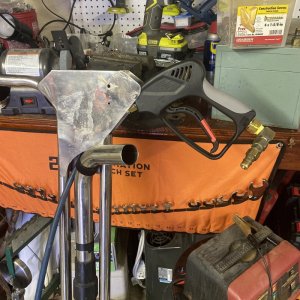truckmount girl
1800greenglides
Bob,
What are you using for a motor to push that overdriven #4? That can be a lot of stress on motor / coupler if the motor doesn't put out the torque to handle it...relieving with a free flow system works, but is not the most efficient way to accomplish your goal. At higher lift situations you are still stressing it, at lower lifts you are relieving too much.
You would be giving up too much performance in lower lift situations....at least for me, and still stressing your already overdriven system at high lifts like for flood extraction.
Even in your situation, I don't see where a dynamic relief system would not benefit you. Also using 2.5" hose straight from the tank, or a dual 2" (4 to the door) would be more efficient to accomplish your task in a single wand situation.
Take care,
Lisa
What are you using for a motor to push that overdriven #4? That can be a lot of stress on motor / coupler if the motor doesn't put out the torque to handle it...relieving with a free flow system works, but is not the most efficient way to accomplish your goal. At higher lift situations you are still stressing it, at lower lifts you are relieving too much.
You would be giving up too much performance in lower lift situations....at least for me, and still stressing your already overdriven system at high lifts like for flood extraction.
Even in your situation, I don't see where a dynamic relief system would not benefit you. Also using 2.5" hose straight from the tank, or a dual 2" (4 to the door) would be more efficient to accomplish your task in a single wand situation.
Take care,
Lisa

